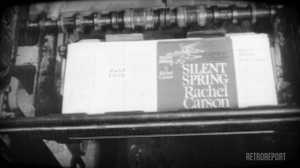The Night New York’s Lights Went Out
What happened when the 1977 blackout hit the already down-on-its-luck city.

Morning broke hot and humid over New York on July 13, 1977, at the outset of what became one of the longest heat waves in the city’s history: The temperature would top 100 degrees three times over the next nine days. Heat wasn’t the only stressor that summer. The unemployment rate was at 12 percent. Subway fares had jumped from 35 to 50 cents. Crime was way up: Over the previous decade, the rates of murders, assaults and car thefts had more than doubled, the rate of burglary had more than tripled and robberies were up by a factor of 10. The city was deep into a fiscal crisis that led to dramatic cuts in social services—including hospital and library closures and massive layoffs of firefighters, police, public school teachers and sanitation workers—which placed additional pressure on the residents who needed city services the most.
A severe thunderstorm turned this volatile situation into a flashpoint. At 8:37 p.m. in neighboring Westchester County, lightning hit two high-voltage lines at a major power plant. Two more major lines on the Con Edison power system, which serviced eight million people in the greater New York metropolitan area, were struck at 8:56 p.m. A cascade of power outages throughout the system, over the course of just an hour, led to its total collapse. By 9:40 p.m. all five boroughs of the city were plunged into darkness. The economic and social frustrations that had steadily been building boiled over. Widespread looting, unrest and arson broke out in the poorest neighborhoods. Over the next 24 hours, 1,600 stores were damaged, 1,000-plus fires were reported and more than 3,700 people were arrested. Economic damages reached well into the hundreds of millions of dollars.
By the time day dawned on July 15, Con Ed’s system was back online, and New York’s residents tried to resume the rhythms of daily life amid broken glass and embers. But they sensed, already, that their city was drastically changed by the night the lights went out. One year later, a special commission established to study the blackout tried, without success, to fully capture its impact. “The social costs of the blackout,” the commission noted in its summary report, “are difficult to measure.”

A new AMERICAN EXPERIENCE collection of images celebrating summer in America throughout the 20th century, from historical firsts like the original drive-in movie theater to iconic events like the 1977 New York City blackout.









